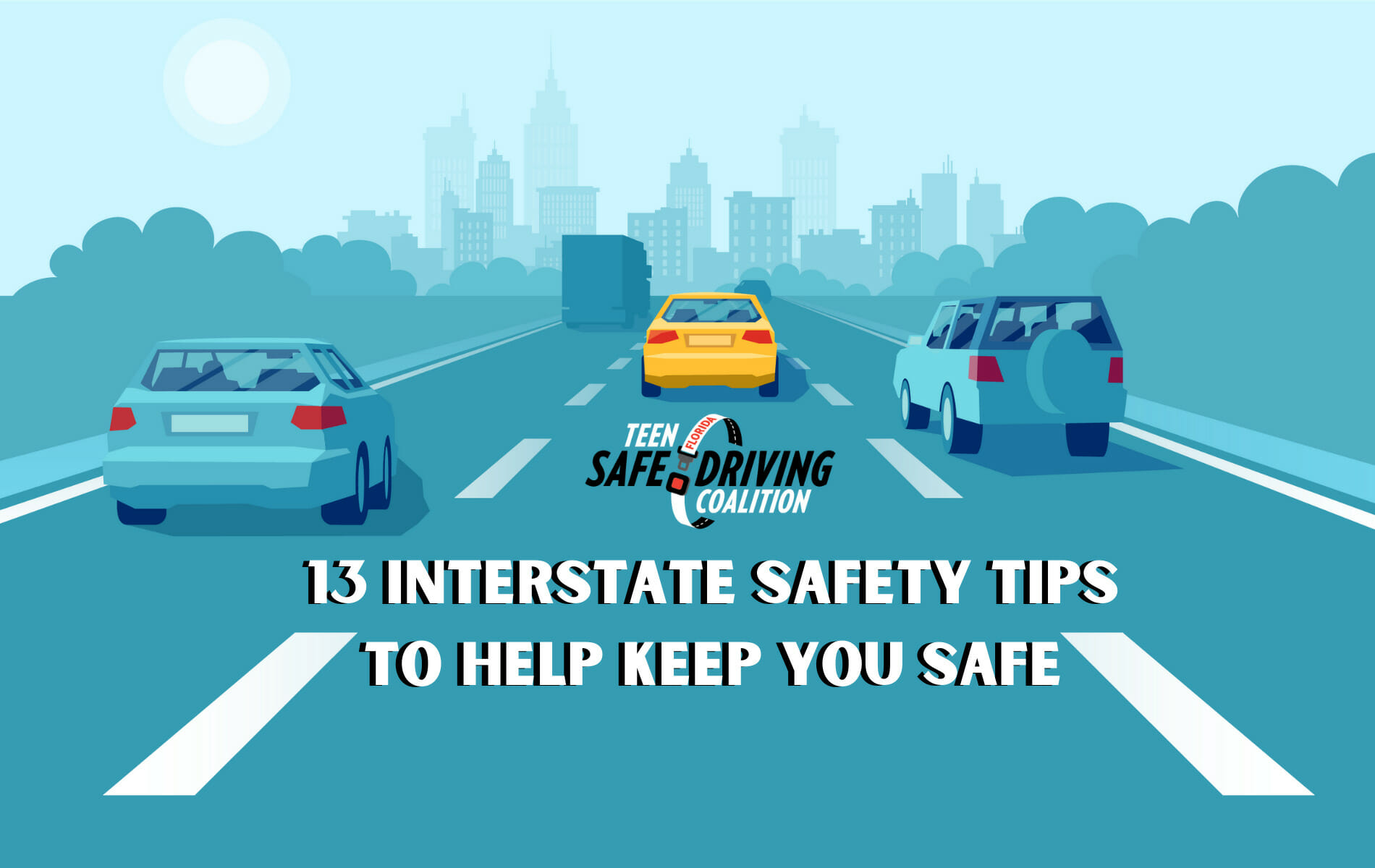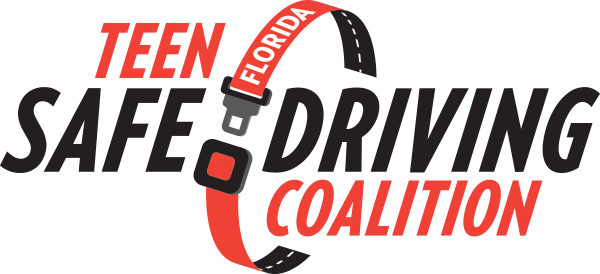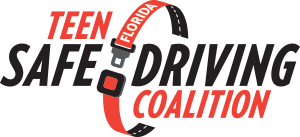
13 Interstate Safety Tips to Help Keep You Safe
According to the NHTSA, 2,841 lives were lost in 2018 due to distracted driving”. It is estimated that more than 80% of cell phone owners use their phones while driving in some capacity
1. Buckle up
Although a common tip, buckling your seatbelt is essential. According to the National Highway Traffic Safety Administration (NHTSA), seat belt use helped save nearly 15,000 lives in 2017.
About 90% of Americans wear seat belts, yet some drivers and passengers don’t take the risk seriously and still don’t wear seatbelts. Before leaving home, be sure to put on your seatbelt (and remind your fellow riders too) so you all can be safe while on the highway.
2. Put down the cell phone
It’s so tempting to reach for your cell phone when you hear that “bing”, but it’s especially unsafe (and against the law in some states) to text and drive on the interstate. The NHTSA states that “[s]ending or reading a text takes your eyes off the road for 5 seconds. At 55 mph, that’s like driving the length of an entire football field with your eyes closed.” If you have an iPhone that’s iOS 11 and above, you can use the Do Not Disturb While Driving feature to send contacts an automated message that allows you to stay focused while you’re on the road.
Don’t reach for your cell phone while driving to keep yourself, riders and other drivers safe. Instead, wait until you’re pulled over to a safe location before responding to texts and notifications.
3. Use the left lane for passing
Be considerate of other drivers by driving in the right lane and using the left lane for passing. Some states have laws in place that will fine or ticket drivers who ride in the left lane without the intention of passing. If you stay in the left lane and other drivers behind you need to get by, they may try to make a dangerous move by passing on the right. Causing traffic to build up behind you is also a safety hazard. If you don’t intend to pass another driver, be considerate and allow other drivers to pass on your left.
4. Get up to speed on the acceleration ramp
When merging onto the interstate, use the acceleration ramp to get up to speed and help prevent other drivers from having to put on brakes or change lanes. By getting up to speed before getting onto the interstate, you can prevent unnecessary traffic movement and even crashes from other drivers braking abruptly. You don’t have to punch it, but use this lane to help you merge more safely.
5. Carefully get out of your vehicle after an collision
If you’re ever involved in a crash on the interstate, do your best to pull as far off of the road as much as you can. This will help to prevent you or other drivers from getting hurt. It’s easy to think that you’re safe while on the side of the road, but distracted drivers may not notice you or your vehicle. It’s very dangerous to get out of your vehicle while on the interstate, but if you have to, pull over as much as you can into a safer spot.
6. Don’t drive too closely
Don’t drive too closely to the vehicle ahead of you while on the interstate. While you might be tempted to rush someone, you could end up putting your life and others lives at risk. If the person ahead of you happens to hit their brakes abruptly, you may not have time to stop and could rear-end them. Leave some extra buffer room, especially on the interstate, between yourself and the next vehicle so you and other drivers can stay safe. As a good rule of thumb, consider the type of vehicle that’s ahead of you, and leave enough room so that you have three or more seconds to stop. The National Safety Council recommends the three-second rule, but as always, carefully consider how much room you may really need.
7. Watch your speed
Be mindful of your speed while on the interstate. In 2020, the Bureau of Transportation Statistics stated that “speeding has been involved in approximately one-third of all motor vehicle fatalities.” As tempted as you might be to speed, it could cost you, your riders and other drivers their lives. Always take note of the speed limit and adjust accordingly.
8. Let it go
Road rage is a real issue, but it’s better to overlook another driver’s mistake or negligent behavior. SafeMotorist.com reports that “66% of traffic fatalities are caused by aggressive driving.” While it might not be easy to ignore someone else’s mistakes on the interstate, it’s necessary. Rather than getting frustrated and driving aggressively after another driver makes a careless mistake, it’s better to take a deep breath, and let it go.
9. Be considerate of tractor trailer drivers
It’s important to remember while driving on the interstate to be considerate of tractor trailer drivers. One good thing to remember is that if you’re behind a truck and not able to see the driver, then he or she likely cannot see your car either. If you want to pass a tractor trailer, be sure to give the driver plenty of space and signal that you are changing lanes. Tractor trailer drivers aren’t able to stop as quickly as other drivers, so be mindful before merging in front of them.
10. Drive Defensively
Drive defensively, anticipating that others will make mistakes. Other drivers might not slow down to let you merge onto the interstate or change lanes if you put your signal light on. Regarding defensive driving tips for teens, KidsHealth.org shares that teens should “not depend on others” and “[c]ut out distractions.” Teen Driver Source shares that while teens know not to text and drive, “they often engage in these behaviors anyway.” Instead of expecting other drivers to perform certain actions while driving, be on the lookout and cut down on distractions to develop safer driving habits.
11. Take breaks
On longer trips, you’re bound to get tired. Whenever you’re feeling drained, it’s better to stop and take a break. Usually, we try to brush off our tiredness by turning on the music or rolling down the windows and continuing right along, but this can be a reckless choice. Pull over to a safe location or have a plan to switch drivers. By stopping to allow yourself to rest physically and or mentally, you’re helping to prevent a crash.
12. Drive according to weather conditions
Stay aware of weather conditions while on the interstate. During inclement weather such as rainy or snowy conditions, you need to be more alert and provide yourself with more time to react. Don’t always assume the roads are safe for driving the speed limit, especially in low-visibility conditions. That’s why it’s a good practice to reduce your speed and give yourself some buffer room.
13. Do not drive under the influence
Don’t drink and drive or get on the roads incapacitated. Driving under the influence and incapacitated driving can both be costly risks. The NHTSA reports that 10,511 fatalities in 2018 occurred due to drunk driving in America.. That is over 30 people a day. When you are not fully aware and functioning, you’re not as likely to make good judgements while on the road. You should have a designated driver or use a rideshare app like Uber or Lyft instead.
Make safety your priority while driving on the interstate
Safety should be a top priority while driving on the interstate. It’s easy to get caught up listening to music or talking on the phone, but it’s not so easy to correct the outcomes of a crash. That’s why it’s best to develop safe driving habits and drive proactively while you’re on the highway.
Resources:
https://www.fcc.gov/consumers/guides/dangers-texting-while-driving
https://www.nhtsa.gov/risky-driving/seat-belts
https://driving-tests.org/driving-statistics/
https://www.nhtsa.gov/risky-driving/distracted-driving
https://www.safemotorist.com/Articles/road_rage.aspx
https://www.teendriversource.org/teen-crash-risks-prevention/distracted-driving
https://www.nhtsa.gov/risky-driving/drunk-driving
By: Jalesa Campbell
Original Post: https://www.safety.com/interstate-safety-tips/

